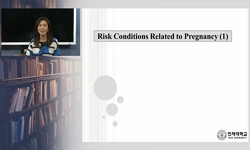Background: This study investigated the effects of pelvic floor stabilization exercise of pain, disfunction, psychosocial, electromyography (EMG) activity on the lower back pain with postpartum. Methods: The study included 20 postpartum women who were...
http://chineseinput.net/에서 pinyin(병음)방식으로 중국어를 변환할 수 있습니다.
변환된 중국어를 복사하여 사용하시면 됩니다.
- 中文 을 입력하시려면 zhongwen을 입력하시고 space를누르시면됩니다.
- 北京 을 입력하시려면 beijing을 입력하시고 space를 누르시면 됩니다.

골반 안정화운동이 산후 요통 여성에게 통증, 기능장애, 심리사회적수준, 근활성도에 미치는 영향 = The Effects of Pelvic Floor Stabilization exercise on Pain, Function, Psychosocial, EMG Activity on the Lower Back Pain with Postpartum Women
한글로보기https://www.riss.kr/link?id=A106149387
-
저자
이민지 ; 권오국 ; 송현승 ; Lee, Min-ji ; Kwon, O-kook ; Song, Hyun-seung
- 발행기관
- 학술지명
- 권호사항
-
발행연도
2018
-
작성언어
Korean
- 주제어
-
등재정보
KCI등재후보
-
자료형태
학술저널
- 발행기관 URL
-
수록면
17-27(11쪽)
- 제공처
-
0
상세조회 -
0
다운로드
부가정보
다국어 초록 (Multilingual Abstract)
Background: This study investigated the effects of pelvic floor stabilization exercise of pain, disfunction, psychosocial, electromyography (EMG) activity on the lower back pain with postpartum. Methods: The study included 20 postpartum women who were randomly assigned to a sling exercise group (SEG, n=10) or a general physical therapy group (GPTG, n=10). Outcomes were assessed using to lower back pain with postpartum the quadruple visual analogue scale (QVAS), the Korean version of the Oswestry disability index (KODI), the fear avoidance belief questionnaire (FABQ), the inventory of functional status after childbirth (IFSAC), the edinburgh postnatal depression scale-Korean (EPDS-K), and trunk muscle activity before and after a 4-week exercise intervention. Statistical analysis were performed using a mean, standard deviation, crosstab test, paired t-test, independent t-test. Kolmogorove-Smirnov test was used for test of normality. Results: Compared to the GPTG, the SEG showed significant improvement in the QVAS, KODI, FABQ, IFSAC, and EPDK-K scores (p<.05) after 4 weeks. Conclusion: Postpartum pelvic strengthening exercise proved to have a positive effect.
동일학술지(권/호) 다른 논문
-
넙다리뒤근육의 유지-이완기법이 무릎관절 각도 증가에 미치는 효과
- 대한정형도수물리치료학회
- 정은호
- 2018
- KCI등재후보
-
전방머리자세 대상자에게 어깨관절 멀리건테이핑 적용이 손목굽힘근의 근활성도와 파악력에 미치는 영향
- 대한정형도수물리치료학회
- 오강오
- 2018
- KCI등재후보
-
무릎관절 멀리건 테이핑이 균형능력과 각근력에 미치는 효과와 측정의 반복에 의한 효과 비교
- 대한정형도수물리치료학회
- 박보현
- 2018
- KCI등재후보
-
엎드린 교각운동 자세에서 견갑골 전인 운동 시 익상 유무에 따른 다리 들기 차이가 체간근의 근 활성도에 미치는 영향
- 대한정형도수물리치료학회
- 김희곤
- 2018
- KCI등재후보




 eArticle
eArticle






